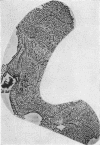Abstract
Hoffman, Heiner (New York University, New York, N.Y.) and Michael E. Frank. Temperature limits, genealogical origin, developmental course, and ultimate fate of heat-induced filaments in Escherichia coli microcultures. J. Bacteriol. 85:1221–1234. 1963.—The heat induction of filaments in microcultures of Escherichia coli occurred through a wide range of temperature, with 43.5 C being the upper limit at which all cells continued to grow. The lower temperature limit was not determined, but filaments were obtained at room temperature in overnight cultivations. The evidence from genealogical histories, growth rates, and cell and filament lengths strongly suggested that the filaments are collections of morphologically undifferentiated, but quasi-independent cell units which continue to grow and multiply while retaining the capacity eventually to break off completely as normal, nonfilamented cells. Filaments which failed to give off a daughter by the end of the second generation after their inception lyse explosively. The evidence obtained contradicts the hypothesis that the mother cell of a clonal microcolony becomes a filament and eventually lyses, although the cell length patterns upon which this hypothesis is based were reproduced. A high degree of synchronization of division was obtained and maintained through the entire period of incubation, which in some cultivations extended into the tenth generation.
Full text
PDF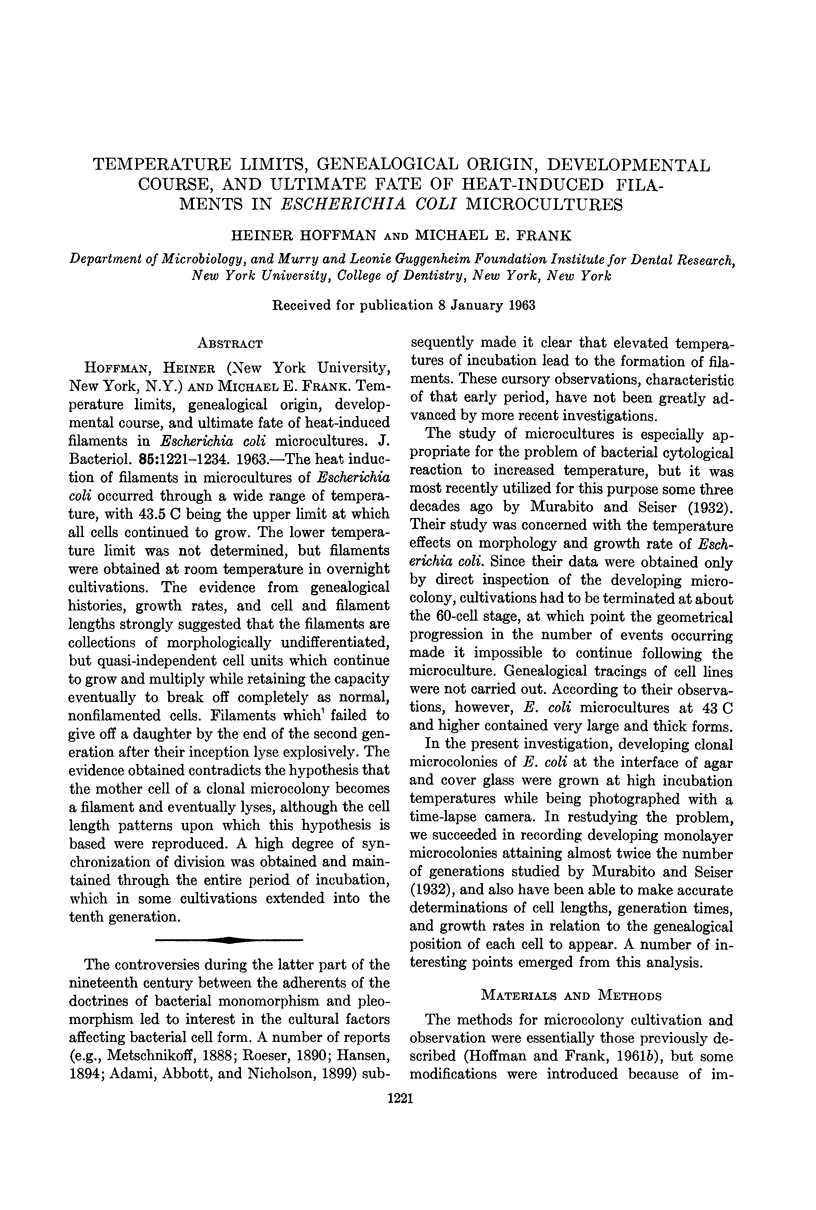
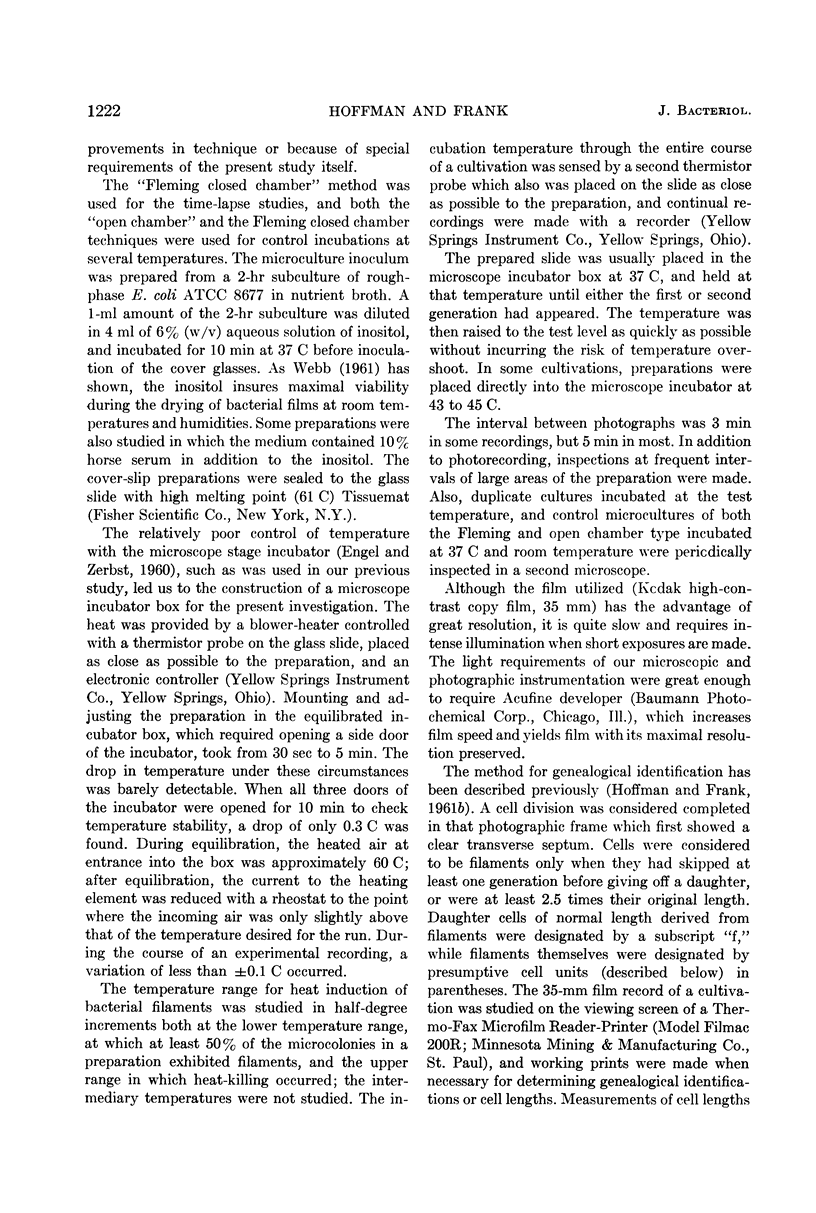
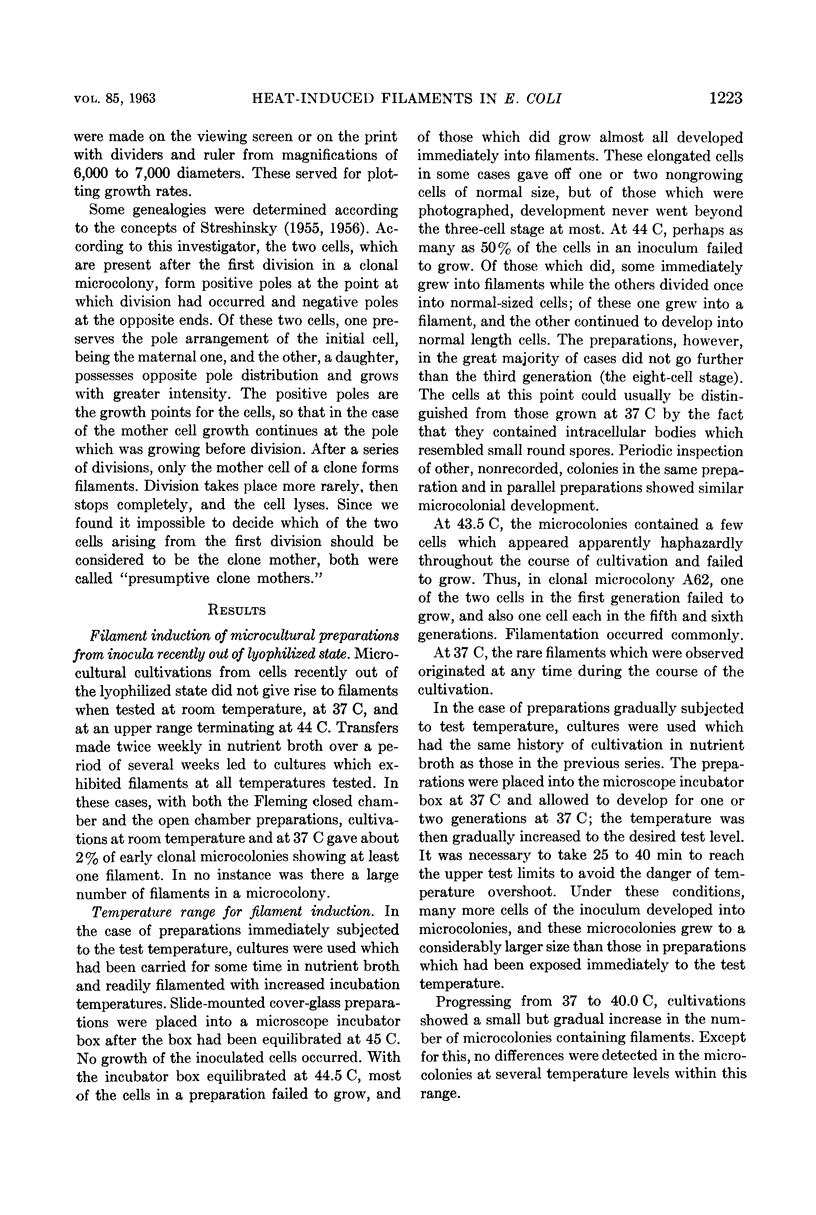
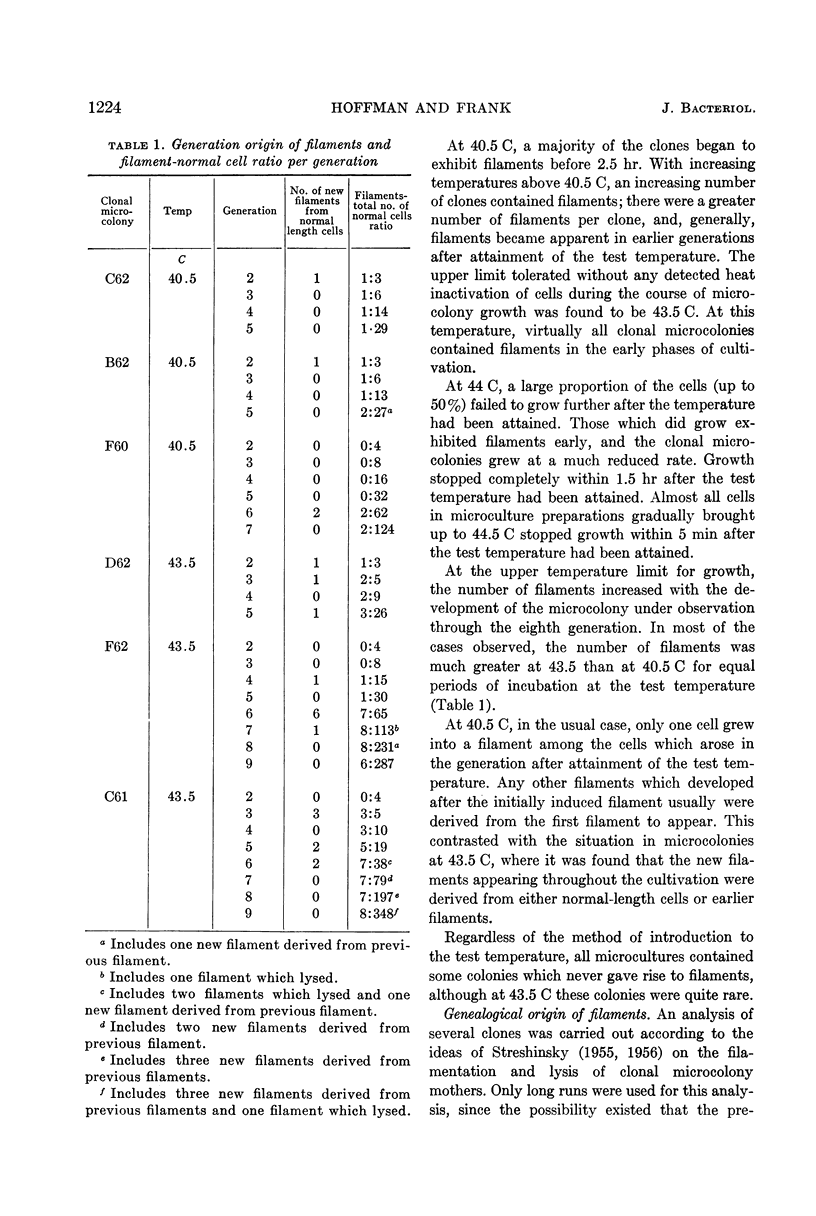
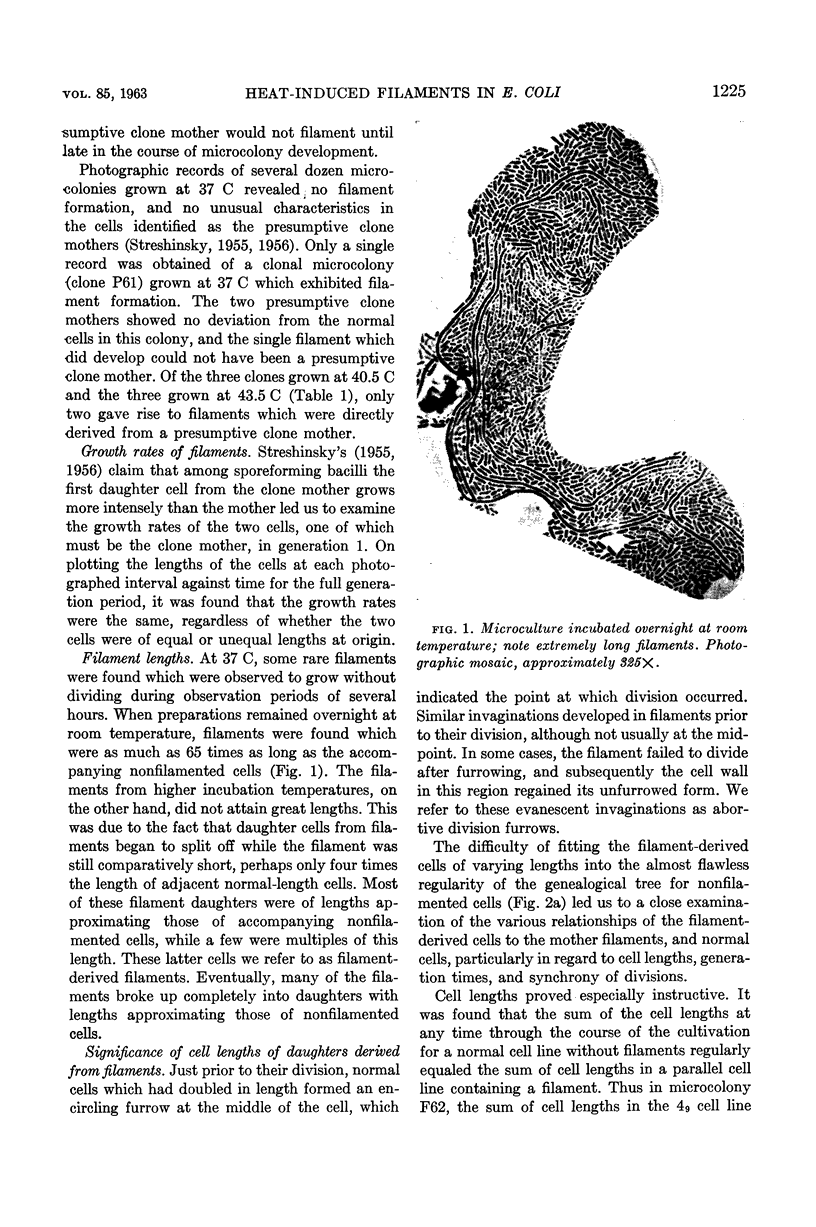
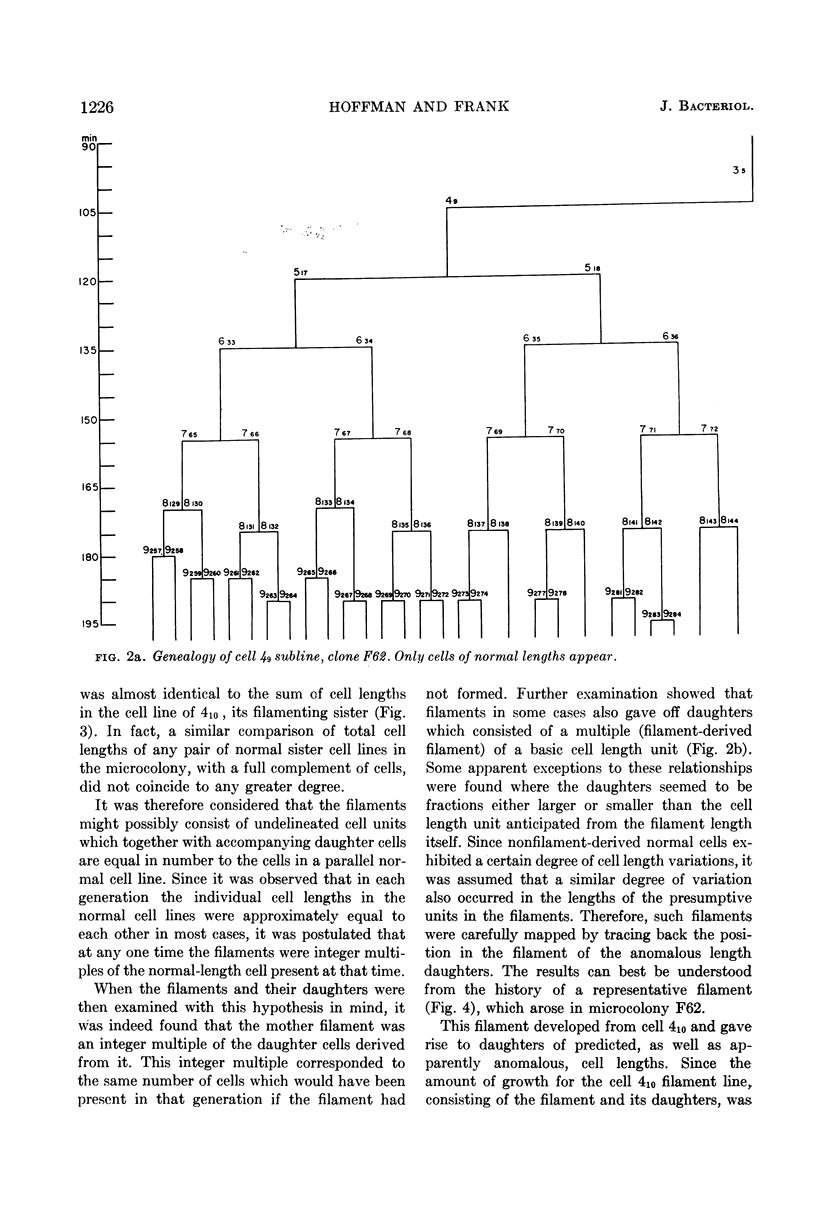
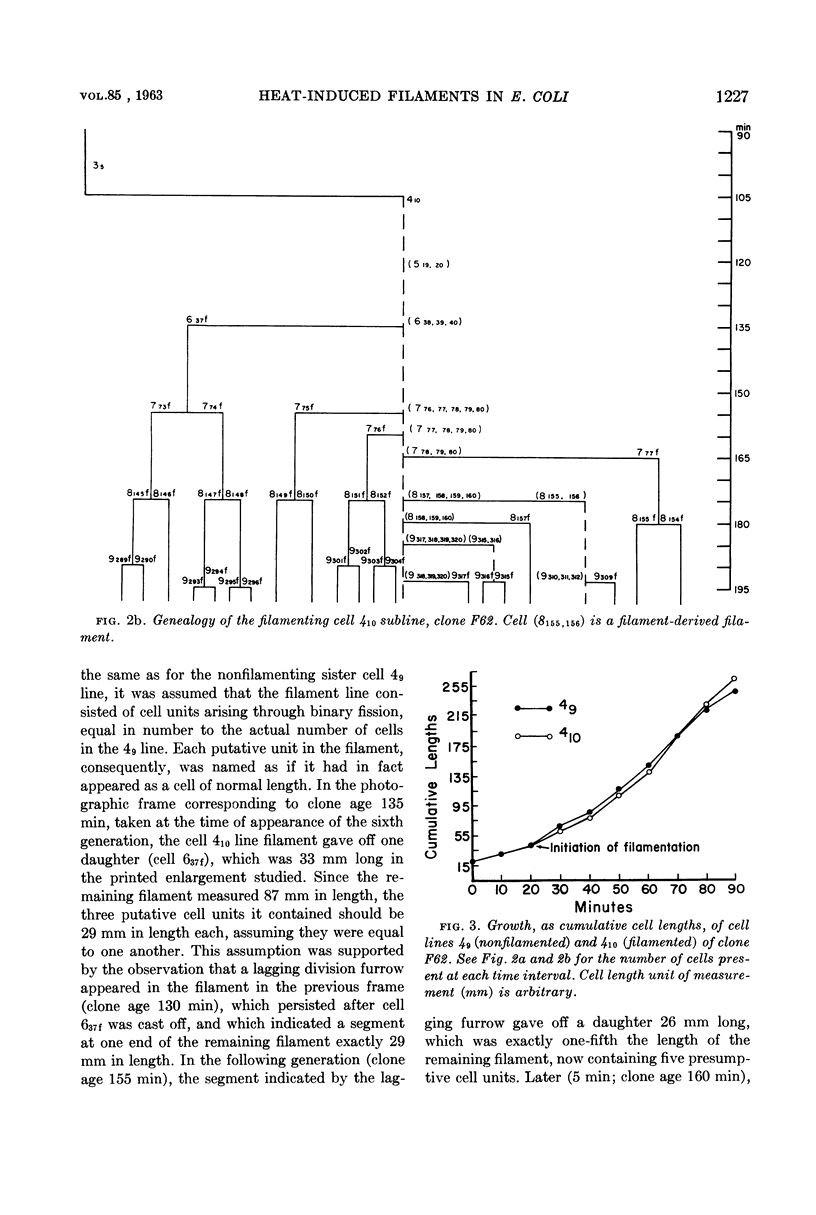
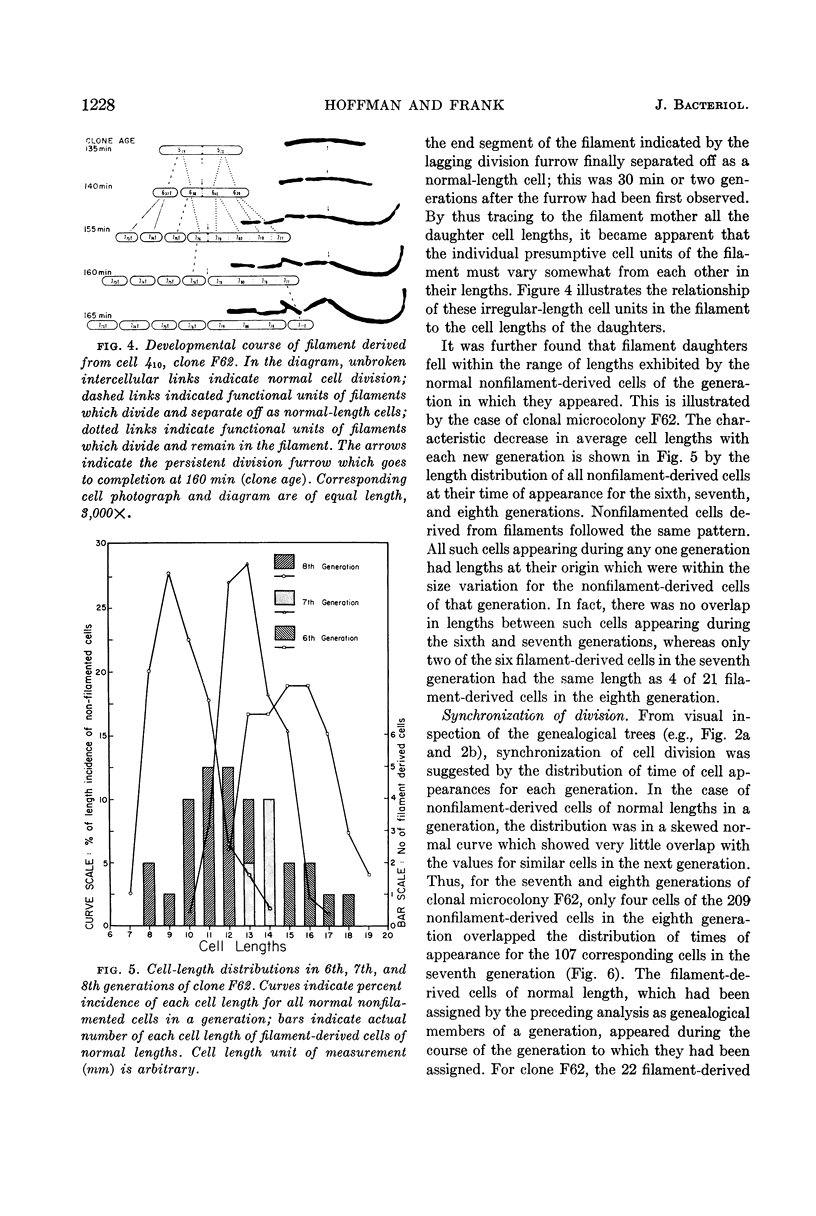
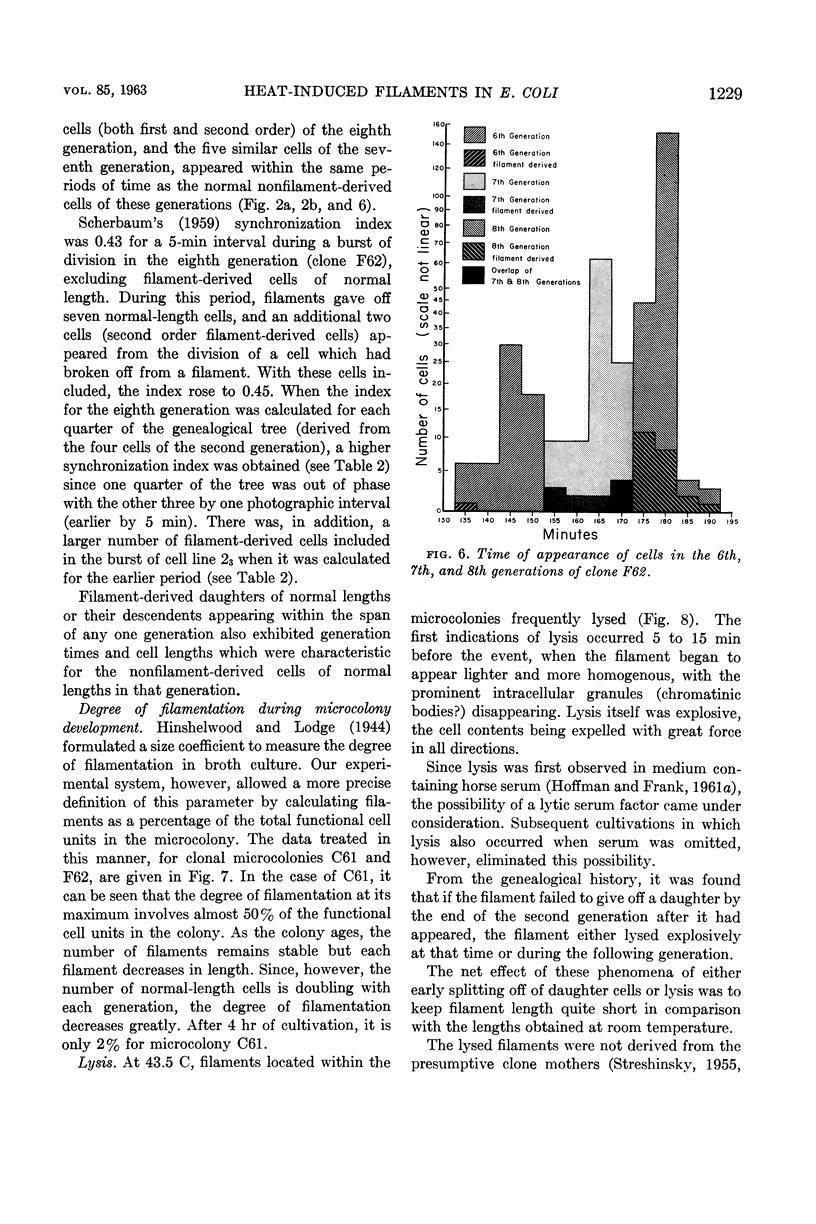
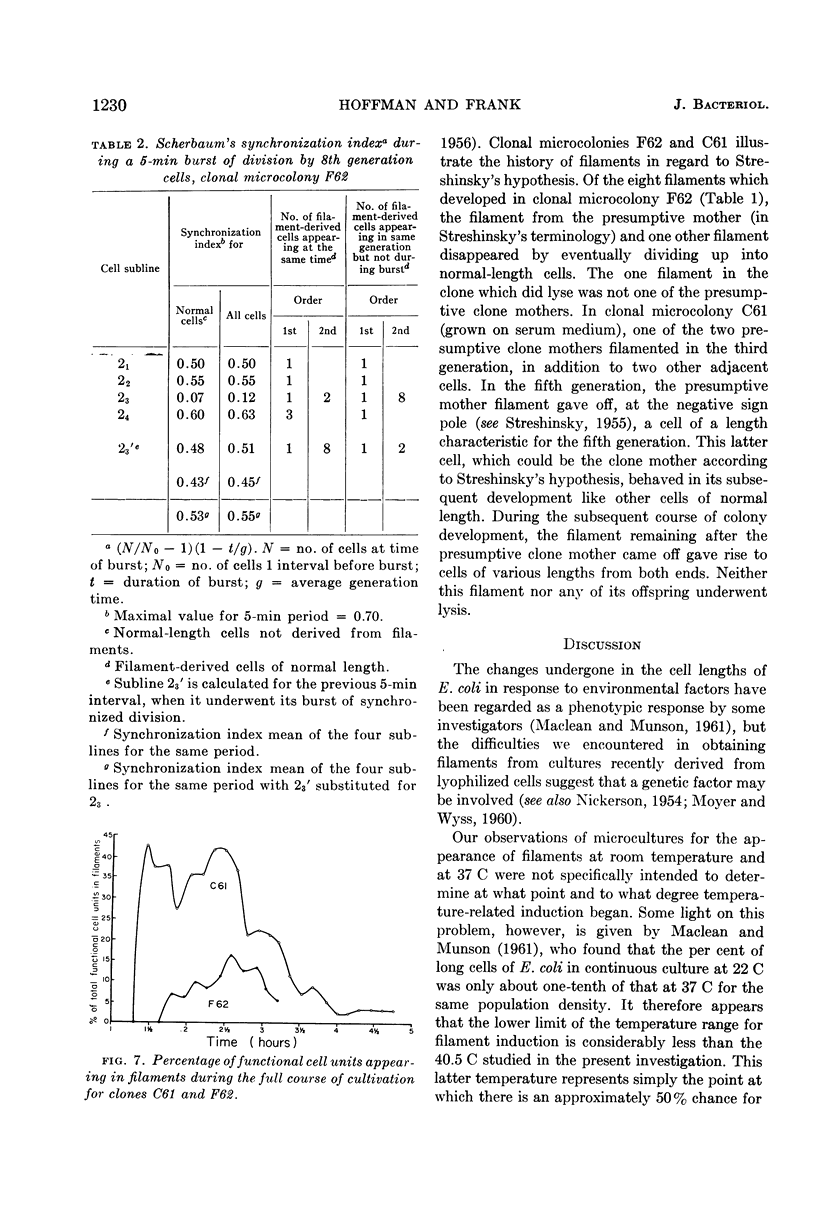
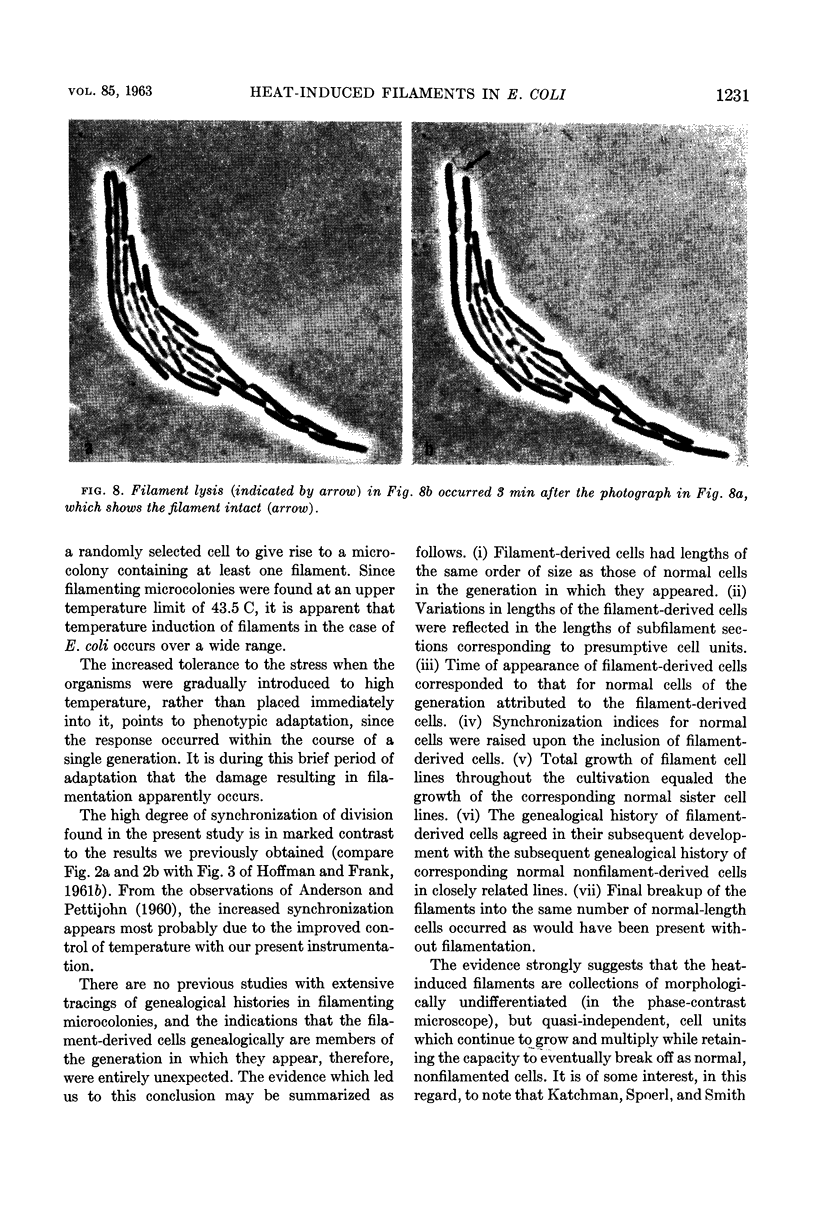
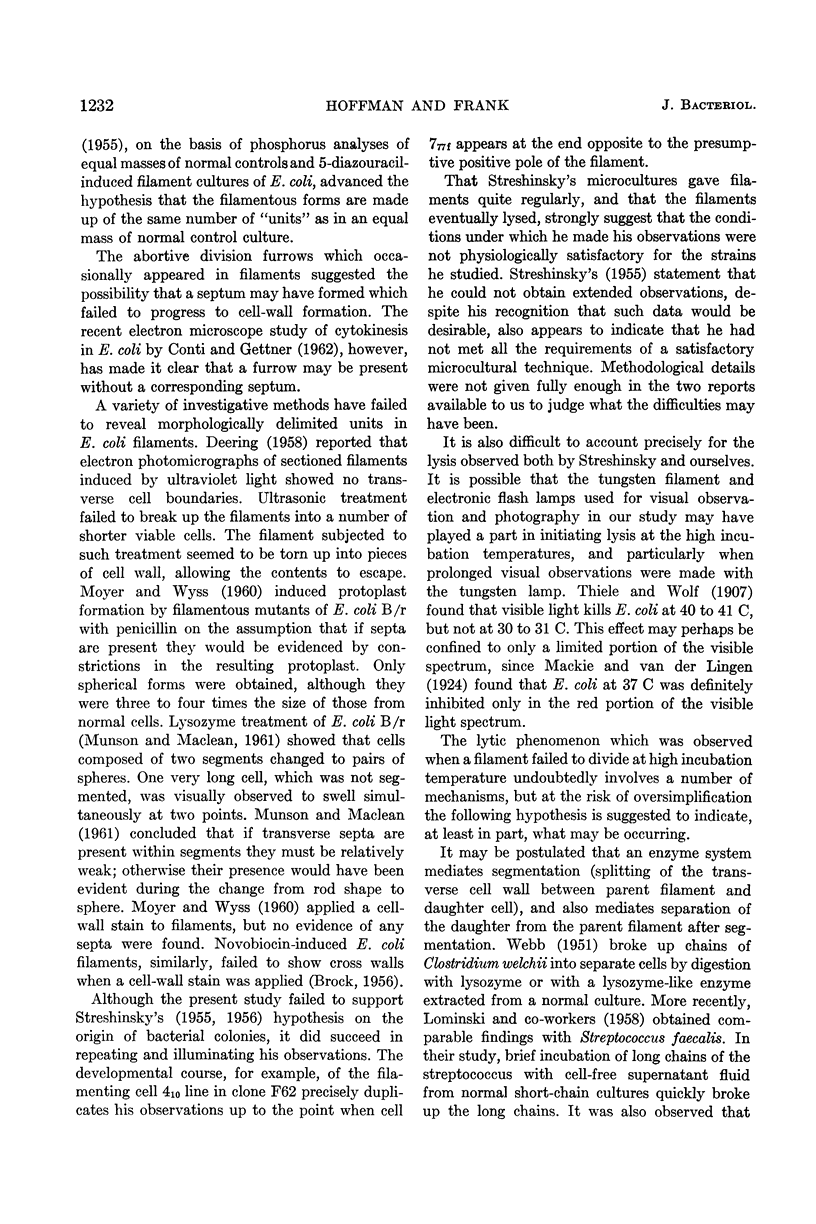
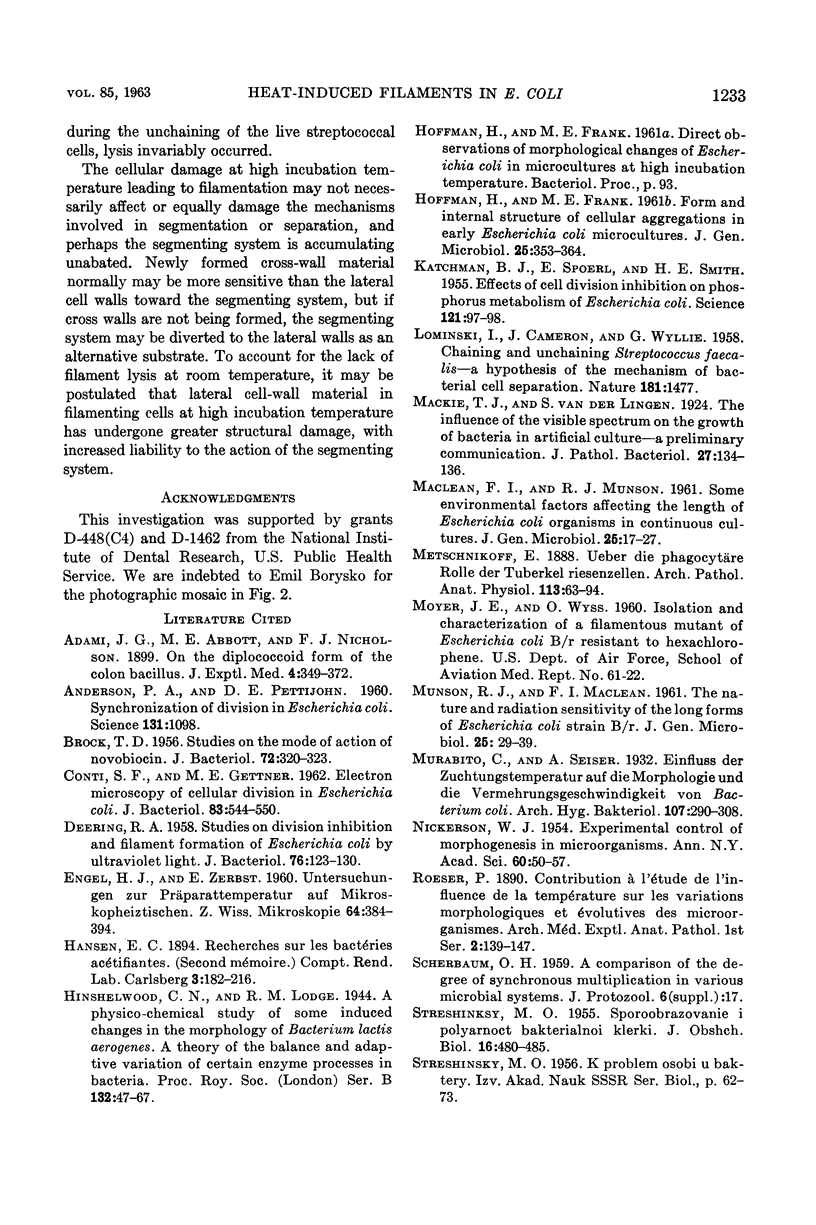
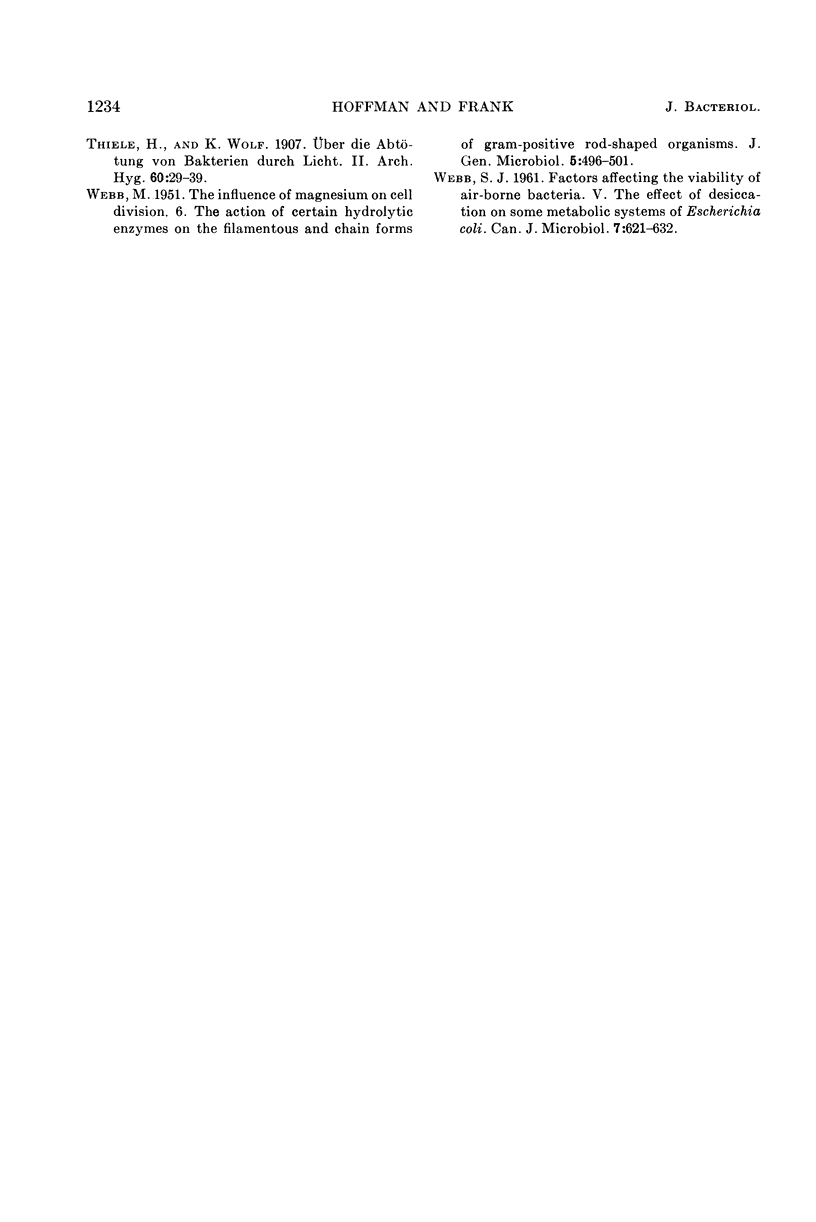
Images in this article
Selected References
These references are in PubMed. This may not be the complete list of references from this article.
- ANDERSON P. A., PETTIJOHN D. E. Synchronization of division in Escherichia coli. Science. 1960 Apr 15;131(3407):1098–1098. doi: 10.1126/science.131.3407.1098. [DOI] [PubMed] [Google Scholar]
- BROCK T. D. Studies on the mode of action of novobiocin. J Bacteriol. 1956 Sep;72(3):320–323. doi: 10.1128/jb.72.3.320-323.1956. [DOI] [PMC free article] [PubMed] [Google Scholar]
- Conti S. F., Gettner M. E. ELECTRON MICROSCOPY OF CELLULAR DIVISION IN ESCHERICHIA COLI. J Bacteriol. 1962 Mar;83(3):544–550. doi: 10.1128/jb.83.3.544-550.1962. [DOI] [PMC free article] [PubMed] [Google Scholar]
- DEERING R. A. Studies on division inhibition and filament formation of Escherichia coli by ultraviolet light. J Bacteriol. 1958 Aug;76(2):123–130. doi: 10.1128/jb.76.2.123-130.1958. [DOI] [PMC free article] [PubMed] [Google Scholar]
- ENGEL H. J., ZERBST E. [Research on the preparation temperature of the microscope warming table]. Zdravookhranenie Kazakhstana. 1960 Oct;64:384–394. [PubMed] [Google Scholar]
- HOFFMAN H., FRANK M. E. Form and internal structure of cellular aggregations in early Escherichia coli microcultures. J Gen Microbiol. 1961 Jul;25:353–364. doi: 10.1099/00221287-25-3-353. [DOI] [PubMed] [Google Scholar]
- KATCHMAN B. J., SPOERL E., SMITH H. E. Effects of cell division inhibition on phosphorus metabolism of Escherichia coli. Science. 1955 Jan 21;121(3134):97–98. doi: 10.1126/science.121.3134.97. [DOI] [PubMed] [Google Scholar]
- LOMINSKI I., CAMERON J., WYLLIE G. Chaining and unchaining Streptococcus faecalis; a hypothesis of the mechanism of bacterial cell separation. Nature. 1958 May 24;181(4621):1477–1477. doi: 10.1038/1811477a0. [DOI] [PubMed] [Google Scholar]
- MACLEAN F. I., MUNSON R. J. Some environmental factors affecting the length of Escherichia coli organisms in continuous cultures. J Gen Microbiol. 1961 May;25:17–27. doi: 10.1099/00221287-25-1-17. [DOI] [PubMed] [Google Scholar]
- MUNSON R. J., MACLEAN F. I. The nature and radiation sensitivity of the long forms of Escherichia coli strain B/r. J Gen Microbiol. 1961 May;25:29–39. doi: 10.1099/00221287-25-1-29. [DOI] [PubMed] [Google Scholar]
- NICKERSON W. J. Experimental control of morphogenesis in microorganisms. Ann N Y Acad Sci. 1954 Oct 29;60(1):50–57. doi: 10.1111/j.1749-6632.1954.tb39997.x. [DOI] [PubMed] [Google Scholar]
- WEBB M. The influence of magnesium on cell division. VI. The action of certain hydrolytic enzymes on the filamentous and chain forms of gram-positive rod-shaped organisms. J Gen Microbiol. 1951 Aug;5(3):496–501. doi: 10.1099/00221287-5-3-496. [DOI] [PubMed] [Google Scholar]
- WEBB S. J. Factors affecting the viability of air-borne bacteria. V. The effect of desiccation on some metabolic systems of Escherichia coli. Can J Microbiol. 1961 Aug;7:621–632. doi: 10.1139/m61-071. [DOI] [PubMed] [Google Scholar]



